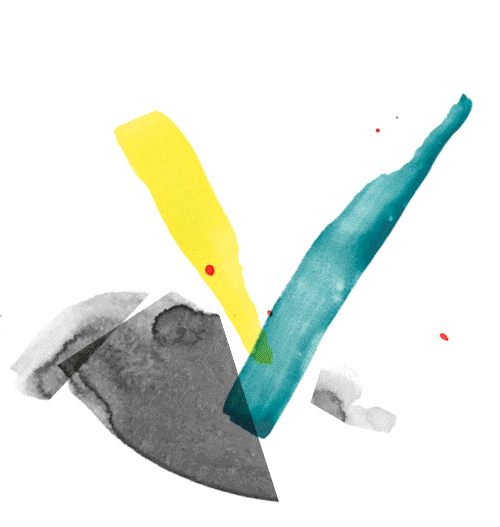

Sign up for our newsletters. You can change the settings or unsubscribe at any time.
Thank you for your subscription. We have sent you an e-mail with a confirmation link.


exp. 1
exp. 2
exp. 3

Flávio de Carvalho (in collaboration with Raymond Frajmund)
Venues: KW Institute for Contemporary Art, Gropius Bau, 11th Berlin Biennale c/o ExRotaprint
Was also part of: exp. 1
Flávio de Carvalho (in collaboration with Raymond Frajmund)
Born 1899 in Barra Mansa, BR – died 1973 in Valinhos, BR
Flávio de Carvalho was a Brazilian artist, engineer, architect, writer, researcher, and inventor. He is mainly known for his Experiências (experiments, experiences, or life events), which were presented and justified by de Carvalho as heterodox scientific research experiments of prophylactic, reformist, progressive, and even utopian intention, actions that went far beyond art.
In fact, only one Experiência was actually named by the artist as such: Experiência no.2. This consisted of the artist defying a religious procession by walking against its flow, for which he was very nearly lynched. He subsequently published a richly illustrated book theorizing the incident. Throughout his lifetime, de Carvalho devised many events following the same principles of Experiência no.2. The most famous and scandalous was the 1956 public parade in which he launched a male miniskirt, which he had invented after years of writing about the different histories and developments of clothing and garments. Other examples are the premiere of his play Bailado do deus morto [Dance of the Dead God], which, like the opening of his first solo art exhibition, was shut down by police; his 1934 ethnographic trip to Europe narrated in his book Ossos do mundo [Bones of the World]; or, decades later, his failed expedition to the Amazon to shoot a film.
All of these actions involved visuality and writing, breaking taboos, and resisting power structures. Through radical self-exposure they aimed at provoking surprise, shock, or anger in public opinion (actively using and manipulating press and media to achieve this). For the artist, who thought of his Experiências as part of his critique of painting—forming what he called “new plastic poems”—they represented a way to reveal the deep emotions and dynamics of the human mind and/or society as linked to traumas acquired during the evolutionary process of the human species.
Marcelo Moreschi
Freiheit für Chile!
Anonymous
Photo album
Queer Ancient Ways: A Decolonial Exploration
Zairong Xiang
Monograph
Solidarity and Storytelling. Rumors against Enclosure
María Berríos
Essay
Expresiones de la locura: el arte de los enfermos mentales
Hans Prinzhorn
Monograph
#fight4rojava
Graffiti
Feminist Health Care Research Group
Web archive
By using this website you agree to the use of cookies in accordance with our data privacy policy.

Flávio de Carvalho (in collaboration with Raymond Frajmund)
Venues: KW Institute for Contemporary Art, Gropius Bau, 11th Berlin Biennale c/o ExRotaprint
Was also part of: exp. 1
Flávio de Carvalho (in collaboration with Raymond Frajmund)
Born 1899 in Barra Mansa, BR – died 1973 in Valinhos, BR
Flávio de Carvalho was a Brazilian artist, engineer, architect, writer, researcher, and inventor. He is mainly known for his Experiências (experiments, experiences, or life events), which were presented and justified by de Carvalho as heterodox scientific research experiments of prophylactic, reformist, progressive, and even utopian intention, actions that went far beyond art.
In fact, only one Experiência was actually named by the artist as such: Experiência no.2. This consisted of the artist defying a religious procession by walking against its flow, for which he was very nearly lynched. He subsequently published a richly illustrated book theorizing the incident. Throughout his lifetime, de Carvalho devised many events following the same principles of Experiência no.2. The most famous and scandalous was the 1956 public parade in which he launched a male miniskirt, which he had invented after years of writing about the different histories and developments of clothing and garments. Other examples are the premiere of his play Bailado do deus morto [Dance of the Dead God], which, like the opening of his first solo art exhibition, was shut down by police; his 1934 ethnographic trip to Europe narrated in his book Ossos do mundo [Bones of the World]; or, decades later, his failed expedition to the Amazon to shoot a film.
All of these actions involved visuality and writing, breaking taboos, and resisting power structures. Through radical self-exposure they aimed at provoking surprise, shock, or anger in public opinion (actively using and manipulating press and media to achieve this). For the artist, who thought of his Experiências as part of his critique of painting—forming what he called “new plastic poems”—they represented a way to reveal the deep emotions and dynamics of the human mind and/or society as linked to traumas acquired during the evolutionary process of the human species.
Marcelo Moreschi
THE MOBILIZATION
Nicolás Cuello
Text
I: Junto a las curadoras de la XI Berlin Biennale for Contemporary Art
Renata Cervetto, Lisette Lagnado
Conversation
Invitation to the Species: Cecilia Vicuña
Tamaas / Cecilia Vicuña
Podcast
Expresiones de la locura: el arte de los enfermos mentales
Hans Prinzhorn
Monograph
A World Without Bones
Agustín Pérez Rubio
O Bailado do Deus Morto
Flávio de Carvalho
Play
By using this website you agree to the use of cookies in accordance with our data privacy policy.

Flávio de Carvalho (in collaboration with Raymond Frajmund)
Venues: KW Institute for Contemporary Art, Gropius Bau, 11th Berlin Biennale c/o ExRotaprint
Was also part of: exp. 1
Flávio de Carvalho (in collaboration with Raymond Frajmund)
Born 1899 in Barra Mansa, BR – died 1973 in Valinhos, BR
Flávio de Carvalho was a Brazilian artist, engineer, architect, writer, researcher, and inventor. He is mainly known for his Experiências (experiments, experiences, or life events), which were presented and justified by de Carvalho as heterodox scientific research experiments of prophylactic, reformist, progressive, and even utopian intention, actions that went far beyond art.
In fact, only one Experiência was actually named by the artist as such: Experiência no.2. This consisted of the artist defying a religious procession by walking against its flow, for which he was very nearly lynched. He subsequently published a richly illustrated book theorizing the incident. Throughout his lifetime, de Carvalho devised many events following the same principles of Experiência no.2. The most famous and scandalous was the 1956 public parade in which he launched a male miniskirt, which he had invented after years of writing about the different histories and developments of clothing and garments. Other examples are the premiere of his play Bailado do deus morto [Dance of the Dead God], which, like the opening of his first solo art exhibition, was shut down by police; his 1934 ethnographic trip to Europe narrated in his book Ossos do mundo [Bones of the World]; or, decades later, his failed expedition to the Amazon to shoot a film.
All of these actions involved visuality and writing, breaking taboos, and resisting power structures. Through radical self-exposure they aimed at provoking surprise, shock, or anger in public opinion (actively using and manipulating press and media to achieve this). For the artist, who thought of his Experiências as part of his critique of painting—forming what he called “new plastic poems”—they represented a way to reveal the deep emotions and dynamics of the human mind and/or society as linked to traumas acquired during the evolutionary process of the human species.
Marcelo Moreschi
Undocumented Rumours and Disappearing Acts from Chile
María Berríos
Essay
Queer Ancient Ways: A Decolonial Exploration
Zairong Xiang
Monograph
Grupo Experimental de Cine en acción
Gabriel Peluffo
Drawing
St Sara Kali George
Delaine Le Bas
Soundscape
Museo de la Solidaridad Salvador Allende (MSSA) in Berlin
A conversation between María Berríos and Melanie Roumiguière
Conversation
„Klaus Eckschen: Hörspiel“
Die Remise
Hörspiel
By using this website you agree to the use of cookies in accordance with our data privacy policy.

Flávio de Carvalho (in collaboration with Raymond Frajmund)
Venues: KW Institute for Contemporary Art, Gropius Bau, 11th Berlin Biennale c/o ExRotaprint
Was also part of: exp. 1
Flávio de Carvalho (in collaboration with Raymond Frajmund)
Born 1899 in Barra Mansa, BR – died 1973 in Valinhos, BR
Flávio de Carvalho was a Brazilian artist, engineer, architect, writer, researcher, and inventor. He is mainly known for his Experiências (experiments, experiences, or life events), which were presented and justified by de Carvalho as heterodox scientific research experiments of prophylactic, reformist, progressive, and even utopian intention, actions that went far beyond art.
In fact, only one Experiência was actually named by the artist as such: Experiência no.2. This consisted of the artist defying a religious procession by walking against its flow, for which he was very nearly lynched. He subsequently published a richly illustrated book theorizing the incident. Throughout his lifetime, de Carvalho devised many events following the same principles of Experiência no.2. The most famous and scandalous was the 1956 public parade in which he launched a male miniskirt, which he had invented after years of writing about the different histories and developments of clothing and garments. Other examples are the premiere of his play Bailado do deus morto [Dance of the Dead God], which, like the opening of his first solo art exhibition, was shut down by police; his 1934 ethnographic trip to Europe narrated in his book Ossos do mundo [Bones of the World]; or, decades later, his failed expedition to the Amazon to shoot a film.
All of these actions involved visuality and writing, breaking taboos, and resisting power structures. Through radical self-exposure they aimed at provoking surprise, shock, or anger in public opinion (actively using and manipulating press and media to achieve this). For the artist, who thought of his Experiências as part of his critique of painting—forming what he called “new plastic poems”—they represented a way to reveal the deep emotions and dynamics of the human mind and/or society as linked to traumas acquired during the evolutionary process of the human species.
Marcelo Moreschi
A Moment of True Decolonization / Episode #6: Sinthujan Varatharajah. Constructing the Tamil Eelam State
The Funambulist / Sinthujan Varatharajah
Podcast
O Bailado do Deus Morto
Flávio de Carvalho
Play
III: La familia son quiénes se alegran con nuestros actos diarios. Detrás de las curadoras de la XI
María Berríos, Agustín Pérez Rubio
Conversation
Weaving Solidarity
Renata Cervetto and Duygu Örs
Q&A
Glossary of Common Knowledge
L’Internationale Online
Glossary
Freiheit für Chile!
Anonymous
Photo album
By using this website you agree to the use of cookies in accordance with our data privacy policy.
By using this website you agree to the use of cookies in accordance with our data privacy policy.




